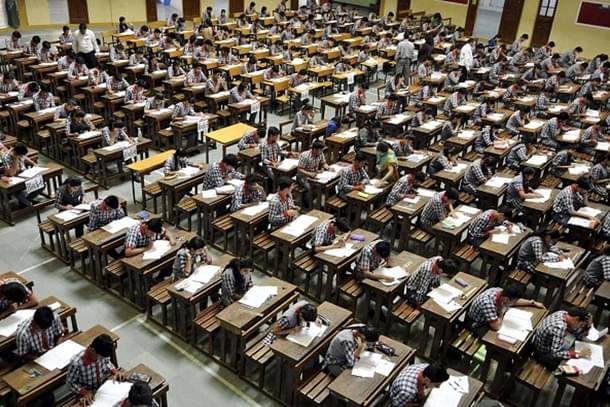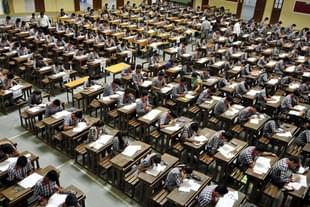Current Affairs
Flexibility In Subject Selection In Classes 11-12, Multiple Board Tests: Draft NCF Proposes Major Revamp Of School Education
Swarajya Staff
Apr 07, 2023, 03:32 PM | Updated 03:32 PM IST
Save & read from anywhere!
Bookmark stories for easy access on any device or the Swarajya app.


The draft National Curriculum Framework (NCF) for school education was released on Thursday (6 April) for feedback.
According to the draft National Curriculum Framework, the final marks of students in Classes 10 and 12 will depend on their overall performance for two years, which may include at least four board exam sessions starting from Classes 9 and 11.
In Classes XI-XII, students can choose from eight curricular areas, and there is flexibility on the selection and combination of subjects.
The NCF proposes several changes in school education, including recommending modular exams instead of a single-test at the year-end.
The framework proposes board exams at least twice a year, suggesting that the final certification should be based on the cumulative result obtained from each examination.
The draft NCF draft seeks to liberate students from restrictive streams, proposing eight curricular areas for Classes 9-10 and 11-12.
In Classes 11-12, students can choose any 16 choice-based courses from the eight curricular areas, to be covered over four semesters, with each choice-based course covered in one semester.
Meanwhile, Class 9-10 will operate under the yearly schedule but two board examinations per year have been suggested.
The NEP document outlines that secondary education for Classes 9-12 will involve four years of multi-disciplinary studies, and students will have the freedom to choose subjects for Classes 11-12. The curriculum will include eight areas, like mathematics and computing, social science, science, vocational education, physical education, humanities, arts education, and interdisciplinary studies.
Starting from Class 11-12, students will be given the freedom to design and choose their own courses. For instance, if a student opts for physics as the primary choice under the science discipline, he or she can then select arts as the second curricular area, which includes music as a discipline. Subsequently, mathematics may be picked as the third curricular area, and the fourth could be from any curricular area available.
Similarly, if a student selects social sciences as one curricular area and history as a discipline within it, he or she can choose humanities as the secondary curricular area, and philosophy as the four courses to be done under it. For the third curricular area, mathematics with four computer science courses can be selected as well.
Lastly, their fourth discipline can either be selected from their previously chosen curricular areas or from a completely different one.
From each of the eight curricular areas, students in Grades 9 and 10 must finish two essential courses, totaling 16 in two years.
The national steering committee, under the leadership of former Isro chief K Kasturirangan, has created a draft that will determine the new school syllabus and textbooks. According to the draft, students will no longer be separated into science, arts/humanities, and commerce; instead, they will have the opportunity to study a variety of courses from different streams. Students will be able to choose the areas they want to specialise in and acquire in-depth knowledge.
The draft document states that four years of secondary study will include “essential courses which all students must take, choice-based courses which each student may select and vocational education, arts and sports which will be an integral part of the curriculum”, reports Times of India.
It draws from NEP which says that “students will be given increased flexibility and choice of subjects to study, particularly in secondary school ... and there will be no hard separation among ‘curricular’, ‘extracurricular’, or ‘co-curricular’ or between ‘vocational’ or ‘academic’ streams”.





